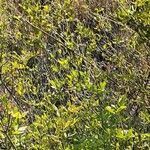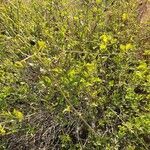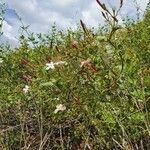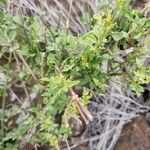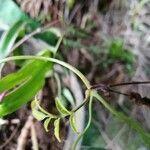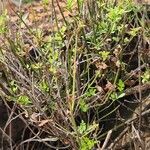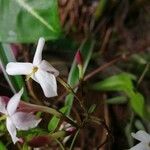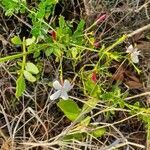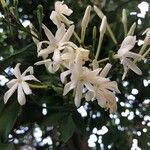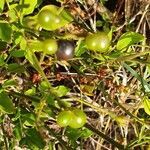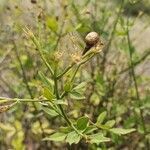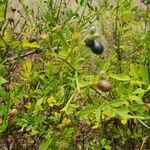Shrubs scandent, 2-4 m. Branchlets terete, angular or grooved. Leaves opposite, pinnatipartite or compound with 5-9 leaflets; petiole 0.5-4 cm; leaflet blade ovate or narrowly so (terminal one usually narrowly rhomboid), 0.7-3.8 × 0.5-1.5 cm, base cuneate or blunt, apex acute, acuminate, or blunt, sometimes mucronate. Cymes terminal or axillary, 2-9-flowered; bracts linear, 2-3 mm. Pedicel 0.5-2.5 cm, middle pedicel of cymes conspicuously shorter. Calyx glabrous; lobes subulate-linear, (3-)5-10 mm. Corolla white, salverform; tube 1.3-2.5 cm; lobes often 5, oblong, 1.3-2.2 cm. Fruit not seen. Fl. Aug-Oct. 2n = 26*.
A vigorous plant. It is a scrambling plant. The leaves are opposite and are compound. They have an odd number of leaflets along the stalk. There are usually about 7 leaflets and they are broadly oval. They are 1-3 cm long by 3-12 mm wide. They only have very short leaf stalks. The flowers can be 4 cm across. They can have pink on the outside. They occur in groups at the ends of branches.
